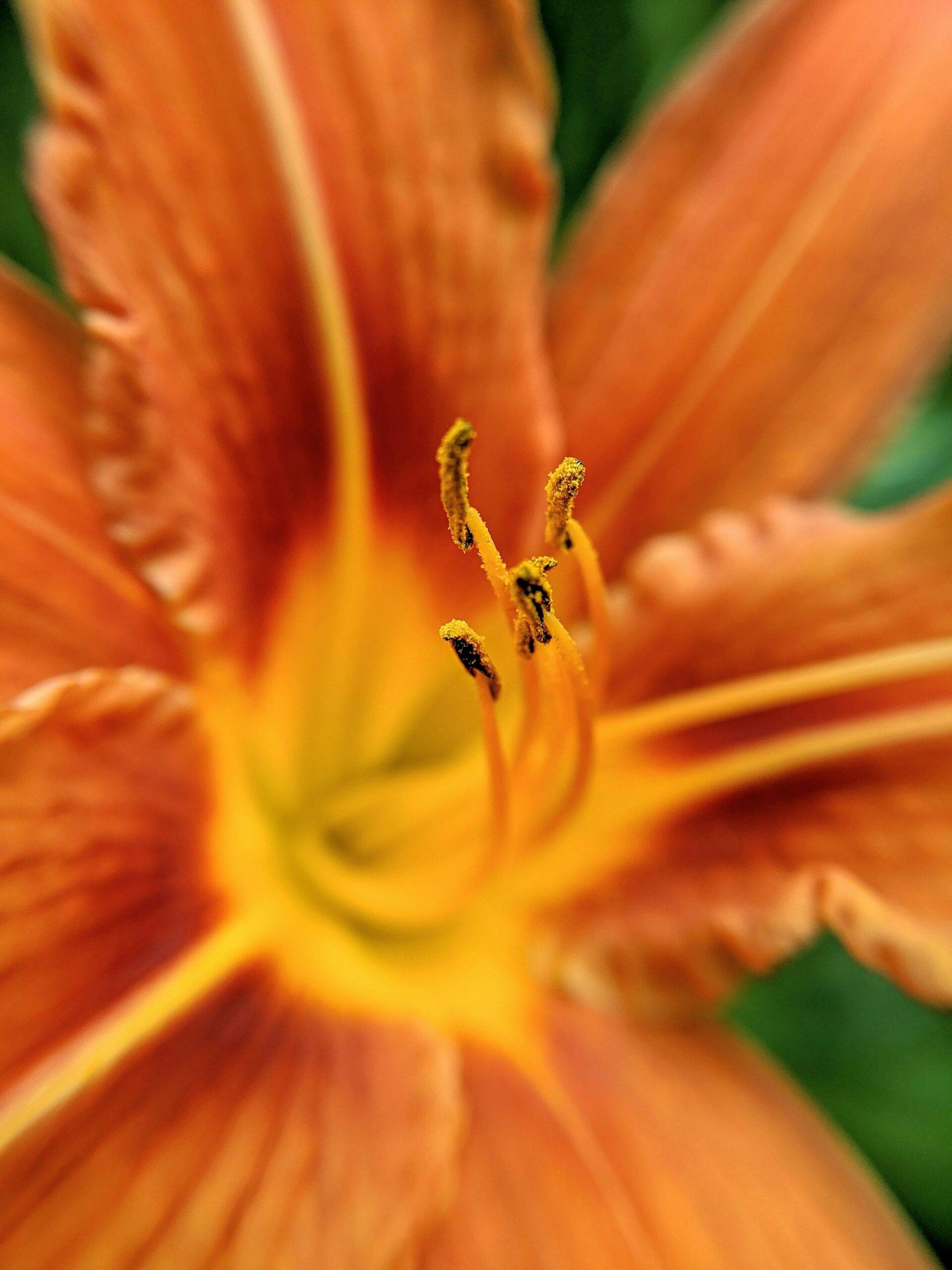Enhancing Cakes with Flowers
The addition of edible dried flowers to cakes can transform a simple dessert into a stunning centerpiece for any celebration. With a range of colors, shapes, and flavors, these botanicals offer an elegant touch that can elevate your baking creations.
Types of Edible Flowers
When selecting flowers to adorn your cakes, you have a variety of options. Here are some popular edible flowers that can be used fresh or dried:
- Calendula (Pot Marigold): Known for its vibrant orange petals, calendula offers a peppery taste and can add a pop of color to your cakes.
- Chamomile: With its dainty white petals and sweet flavor, chamomile is perfect for a subtle, floral touch.
- Cornflower: These bright blue flowers can add a striking contrast to your cakes and provide a slightly sweet to spicy flavor.
- Nasturtium: These bold flowers range from yellow to red and have a peppery taste similar to watercress.
- Pansy: With a variety of colors, pansies have a mild and slightly sweet flavor, making them a versatile choice for cake decoration.
- Rose: Rose petals come in many hues and offer a classic floral aroma and flavor, ideal for elegant cake designs.
- Viola: Similar to pansies, violas have a sweet and perfumed taste and are available in an array of colors.
When using dried edible flowers, it’s essential to ensure they are free from chemicals and safe for consumption. You can find a selection of edible pressed flowers that are specifically prepared for culinary use.
Safety and Selection
When incorporating edible flowers into your cakes, safety is paramount. Here’s how you can ensure your floral garnishes are safe for consumption:
- Proper Identification: Always verify the species of the flower to ensure it’s edible. Misidentifying flowers can lead to the inclusion of non-edible or toxic varieties.
- Pesticide-Free: Select flowers that have not been treated with pesticides or chemicals. Ideally, use flowers grown organically or those specifically cultivated for culinary use.
- Preparation: Before using, it’s recommended to wash the petals thoroughly to remove any dirt or small insects (Tasting Table).
- Moderation: While edible flowers can enhance your dishes, some may cause mild gastrointestinal distress if consumed in large amounts. It’s best to use them sparingly as garnishes.
| Flower Type | Flavor Profile | Suggested Use |
|---|---|---|
| Calendula | Peppery | Tarts, Sauces |
| Chamomile | Sweet | Tea, Pastries |
| Cornflower | Slightly Sweet | Garnishes |
| Nasturtium | Peppery | Salads |
| Pansy | Mildly Sweet | Frosting Decorations |
| Rose | Floral | Infused Creams |
| Viola | Sweet, Perfumed | Cake Toppers |
For inspiration on using these blooms in your baking, explore ideas for a pressed flower cake or discover the beauty of edible pressed flowers for cakes. With the right selection and preparation, edible dried flowers can be the secret ingredient that sets your cakes apart.
Drying Methods for Longevity
Preserving the beauty and flavor of edible flowers is essential for using them as exquisite decorations on cakes and other culinary creations. Drying your edible dried flowers not only extends their shelf life but also intensifies their taste and aroma, making them an even more delightful addition to your dishes.
Air Drying Techniques
Air drying is one of the simplest and most cost-effective methods to dry flowers. This technique requires little more than a well-ventilated space and some patience. To air dry flowers, follow these steps:
- Harvest the flowers when they are dry and free from dew.
- Remove any unwanted leaves or stems, as these can harbor moisture.
- Tie the stems of the flowers together with a string and hang them upside down in a dark, warm, and dry place with good air circulation.
- Allow the flowers to hang undisturbed for one to two weeks, checking periodically for dryness.
- Once completely dry, gently remove the flowers and store them in an airtight container.
Air drying preserves the natural shape and color of the flowers, making them ideal for edible pressed flowers and pressed flower cake decorations. Bear in mind that while air drying is straightforward, it may not be suitable for all types of flowers, especially those with high moisture content.
Oven and Dehydrator Options
For those looking for a faster method or dealing with more delicate blooms, oven and dehydrator drying can be excellent alternatives. These methods can produce ready-to-use flowers in a fraction of the time it takes to air dry.
| Drying Method | Temperature | Time |
|---|---|---|
| Oven | Low setting (~150°F or lowest possible) | 1-3 hours (check frequently) |
| Dehydrator | 95-110°F | 4-12 hours (depending on flower type) |
When using an oven:
- Preheat your oven to the lowest possible temperature.
- Arrange the flowers on a baking sheet lined with parchment paper, ensuring they do not overlap.
- Place the flowers in the oven, leaving the door slightly ajar to allow moisture to escape.
- Check the flowers frequently to prevent burning, and remove them when they are crisp and dry.
For a dehydrator:
- Spread the flowers on the dehydrator trays, making sure they’re not touching.
- Set your dehydrator to the recommended temperature for drying herbs or flowers.
- Monitor the process, as drying times can vary based on the flower type and dehydrator model.
Both methods are effective for creating edible dried flowers for cakes that have concentrated flavors and fragrances. The dehydrator is particularly beneficial for its precise temperature control, which can be critical for retaining the delicate properties of the flowers.
Regardless of the method you choose, always ensure that the dried flowers are completely moisture-free before storing to prevent the growth of mold or bacteria. With the right approach, you can maintain the vibrant colors and aromatic flavors of your edible flowers, ready to grace everything from pressed flowers for cakes to edible pressed flower cake designs.
Storing for Optimal Freshness
Proper storage of your edible dried flowers is essential in maintaining their quality, aroma, and flavor. By following these guidelines, you can ensure your floral garnishes remain vibrant and fresh for your special occasion cakes.
Choosing Containers
When it comes to storing your dried blossoms, selecting the right container is pivotal. You’ll want to opt for airtight containers to prevent moisture from seeping in and potentially rehydrating your flowers, which could lead to mold growth.
Glass jars with tight-sealing lids are an excellent choice as they don’t retain odors and are easy to sterilize. Alternatively, you can use high-quality plastic containers or metal tins with airtight seals. If you’re using plastic, ensure it’s food-grade to avoid any chemical leaching.
Here’s a simple chart to help you match the container size with the volume of dried flowers:
| Container Size | Volume of Dried Flowers |
|---|---|
| Small (up to 1 cup) | 1 – 2 handfuls |
| Medium (1-2 cups) | 3 – 4 handfuls |
| Large (2-4 cups) | 5+ handfuls |
Remember, it’s better to store different types of flowers separately to maintain their unique characteristics. For more information on preserving your edible garnishes, explore our guide on edible pressed flowers.
Ideal Storage Conditions
To ensure the longevity of your edible dried flowers for cakes, store them in a cool, dark, and dry place. A pantry, cupboard away from the stove, or a cellar are all suitable options. Avoid areas where they could be exposed to heat, such as near a window or appliances, as this can lead to fading and loss of flavor.
Additionally, aim to keep the temperature consistent, as fluctuations can cause condensation within your storage containers. Maintaining a low humidity environment is crucial to prevent your flowers from becoming limp and losing their textural quality.
Follow these guidelines for optimal storage conditions:
| Storage Factor | Ideal Condition |
|---|---|
| Light | Dark, away from direct sunlight |
| Temperature | Cool, consistent temperature |
| Humidity | Low humidity, dry environment |
By carefully selecting your containers and paying attention to storage conditions, your pressed flower cake decorations will remain as vivid and aromatic as the day you prepared them. Whether you’re planning to adorn a pressed flowers for cakes creation or mix them into a dessert, these steps will help preserve the essence of your edible embellishments.
Culinary Applications and Benefits
Edible dried flowers are more than just a decorative accent; they are a secret ingredient that can transform your dishes with their unique flavors and aromas. When you incorporate these blooms into your culinary creations, especially cakes, you’re tapping into a tradition that infuses both beauty and health benefits into your cooking.
Flavor and Aroma Profiles
Each type of edible flower brings its own distinct taste and scent to the table. Here’s a guide to some of the most popular edible dried flowers and their flavor profiles:
| Flower Type | Flavor | Aromatic Notes |
|---|---|---|
| Rose Petals | Slightly sweet, delicate | Floral, reminiscent of classic rose scent |
| Lavender | Floral, slightly sweet with citrus notes | Intensely aromatic, calming |
| Chamomile | Apple-like, sweet | Lightly floral, soothing |
| Hibiscus | Tart, cranberry-like | Fresh, fruity |
| Marigold | Spicy to subtly bitter | Earthy, capable of adding depth |
(Source: Shabbyfufu)
You can experiment with these edible dried flowers by sprinkling them onto your cakes for a touch of elegance. Imagine the subtle sweetness of rose petals gracing a vanilla sponge or the tartness of hibiscus blossoms complementing a rich chocolate ganache. Your pressed flower cake will not only look stunning but also surprise your guests with an unexpected burst of natural flavors.
Health Properties of Flowers
In addition to their culinary appeal, edible dried flowers offer a range of health benefits. They contain various compounds that can contribute positively to your well-being:
| Flower Type | Health Properties |
|---|---|
| Chamomile | Anti-inflammatory, aids in digestion |
| Calendula | Anti-bacterial, anti-oxidant, anti-inflammatory, anti-viral |
| Hibiscus | Rich in Vitamin C, can help lower blood pressure |
| Lavender | Alleviates anxiety, improves sleep quality |
(Source: Tasting Table)
When you choose to decorate your edible pressed flower cake with these blooms, you’re not just enhancing the aesthetics—you’re infusing your cake with ingredients that can soothe, heal, and rejuvenate. Whether it’s the calming effect of chamomile in a tea cake or the vibrant color and peppery flavor of marigold in a citrus tart, edible flowers allow you to incorporate natural elements that are both tasty and therapeutic.
Remember, when selecting flowers for culinary use, always ensure they are safe for consumption and free from pesticides. By doing so, you can enjoy the full spectrum of benefits that edible pressed flowers for cakes have to offer. Whether you are a professional chef or a home baker, the incorporation of these blossoms can take your cake designs from ordinary to extraordinary.
Preparing Your Edible Garnishes
Edible garnishes can transform your culinary creations from simple to stunning. When it comes to cakes, edible dried flowers are the secret ingredient that can add a touch of elegance and sophistication. However, before you start decorating your pressed flower cake, it’s essential to ensure that your edible garnishes are safe for consumption and properly prepared.
Ensuring Purity for Consumption
Before you begin using any type of edible flower in your baking, it’s vital to confirm that the flowers are indeed edible and safe to eat. Not all flowers are suitable for consumption, and certain varieties can be hazardous, especially during pregnancy or nursing. Always consult with a medical or plant expert to accurately identify the flowers and understand which parts are safe to eat (101 Cookbooks).
Furthermore, it’s crucial to source your edible pressed flowers from reputable suppliers. This ensures that the flowers have not been treated with harmful chemicals and are intended for culinary use (Shabbyfufu). Organic flowers are the best choice since they are grown without synthetic pesticides or fertilizers, which makes them ideal for use in edible pressed flower cakes (West Coast Seeds).
Washing and Handling Tips
Once you have verified the purity of your edible flowers, the next step is to prepare them for use as garnishes. Washing the petals gently but thoroughly can help remove any residual dirt or small insects. Here’s a step-by-step guide to preparing your edible flowers:
- Gently shake the flowers to dislodge any debris.
- Rinse the flowers under a stream of cool water.
- Pat the flowers dry with a clean towel or use a salad spinner to remove excess water.
- Lay the flowers out on a clean towel to air dry completely before use.
Keep in mind that some edible flowers can cause mild gastrointestinal distress if consumed in large quantities. It’s best to use these flowers sparingly as a decorative element rather than a main ingredient (Tasting Table).
Proper handling is also essential to maintain the integrity and appearance of your dried flowers. Always handle the flowers by their stems or with tweezers and avoid touching the delicate petals with your fingers, as this can cause bruising and discoloration.
By ensuring the purity of your garnishes and following these washing and handling tips, you can confidently use edible dried flowers for cakes to create beautiful, safe, and delicious baked goods for any special occasion.
Creative Ways to Decorate
Decorating with edible dried flowers adds an elegant and unique touch to your culinary creations. Whether you’re adorning a cake for a special occasion or looking for novel ways to incorporate flowers into your dishes, these natural beauties offer endless possibilities.
Decorating Cakes and Cupcakes
When it comes to cakes and cupcakes, edible flowers serve as both a visual treat and a subtle flavor enhancer. Here’s how you can use them:
- Pressed Flower Technique: Apply edible pressed flowers directly onto the icing of a cake for a stunning botanical look. Learn more about creating a pressed flower cake.
- Flower Petal Confetti: Sprinkle smaller petals over your frosted desserts for a colorful and festive effect.
- Floral Arrangements: Craft a bouquet using a variety of pressed flowers for cakes to create a focal point on larger cakes.
Example Cake Decoration with Edible Flowers
| Cake Type | Decoration Style | Flowers Used |
|---|---|---|
| Wedding Cake | Floral Arrangements | Roses, Lavender, Pansies |
| Birthday Cake | Petal Confetti | Marigold, Cornflower, Violet |
| Cupcakes | Pressed Flower | Chamomile, Hibiscus, Daisies |
Each style brings a different aesthetic and flavor profile to your baked goods. For a detailed guide on using edible pressed flowers, visit our article on edible pressed flower cake.
Beyond Baking: Other Uses
Edible flowers are versatile and can be used in a variety of culinary applications beyond baking. Consider the following creative uses:
- Beverage Garnishes: Float petals on top of cocktails or infuse teas with chamomile or jasmine for an aromatic experience.
- Salad Additions: Toss flower petals into green salads for a burst of color and a hint of flavor.
- Elegant Entrees: Place whole or chopped flowers onto plated dishes as an eye-catching garnish.
- Infusions and Syrups: Use flowers like lavender or roses to infuse syrups, vinegars, or oils with delicate flavors.
According to Tasting Table, edible flowers can be used to create delicate apple blossom jelly, enhance refreshing beverages, top salads, make simple syrups, and infuse vinegars. Moreover, calendula flowers, praised for their health properties, can add a peppery note to tarts and sauces, and enhance the vibrancy of egg yolks and cheeses.
Remember, when cooking with edible flowers, it’s crucial to properly identify the plant and ensure they have not been treated with pesticides. Always wash the petals before use to ensure they are safe for consumption.
Discover the array of edible dried flowers for cakes and other culinary delights, and let your creativity bloom in the kitchen. Whether you’re baking or cooking, edible flowers can transform your dishes into works of art that are as delightful to the palate as they are to the eye.




Leave a Reply